This is homemade Vegan Tajik Just as delicious as the classics made with Greek yogurt. Made with tangy and creamy vegan yogurt, garlic, cucumber, olive oil and dill, this is a rich yet refreshing sauce you can serve with almost anything.
Make a batch in 10 minutes and use it with grain bowls, salads, meze platters, sandwiches and more!
Table of Contents:
1. What is tzatziki?
2. Why this recipe works
3. Note the ingredients
4. Step by step instructions
5. Tips for making this recipe
6. Frequently Asked Questions
7. Recipe card with notes
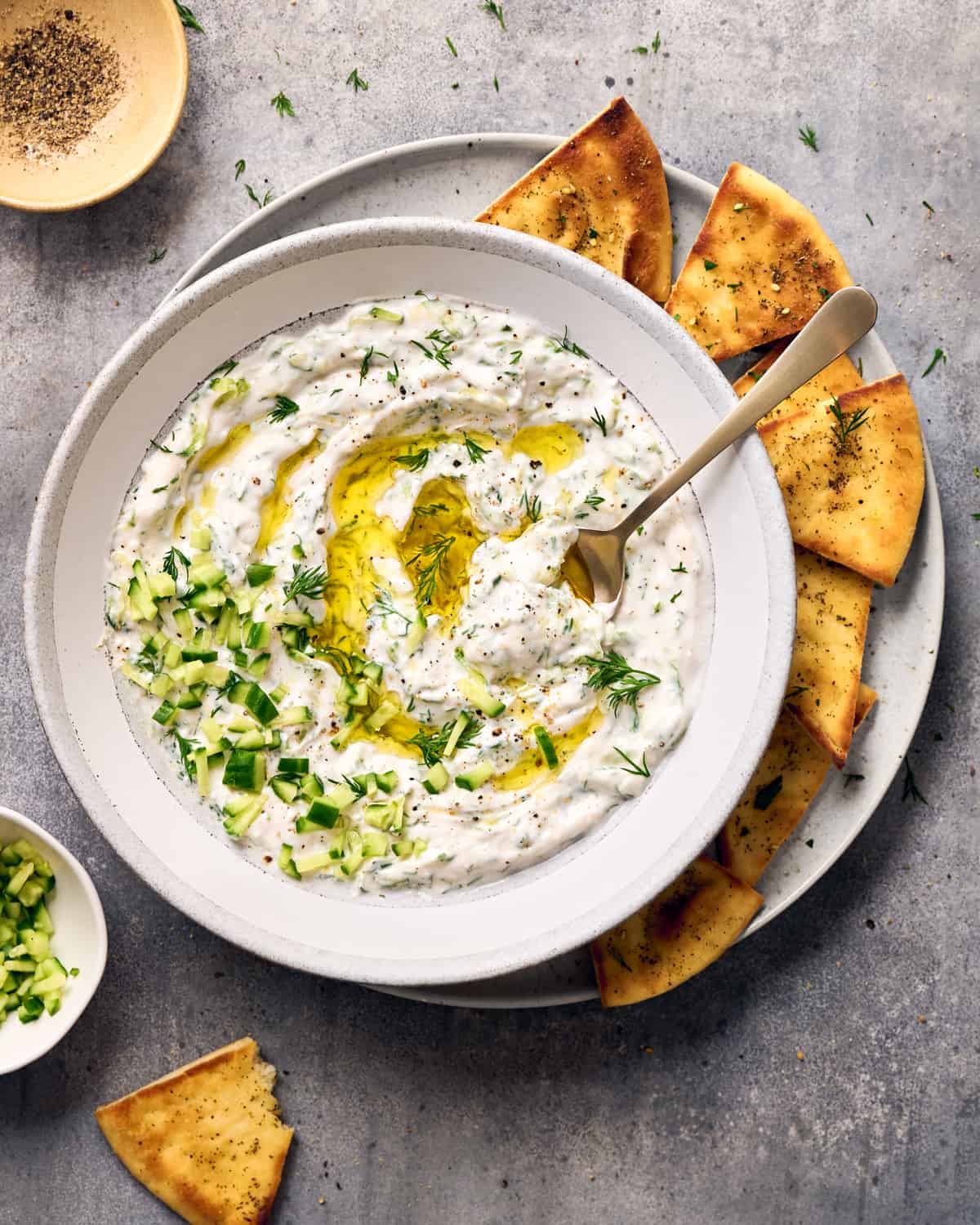
What is tzatziki?
Tzatziki is a creamy yogurt sauce popular throughout Greece and the Middle East. It is traditionally made from strained sheep’s or goat’s curd mixed with minced garlic, drained cucumber, lemon juice, salt, fresh herbs and olive oil.
It is often used on gyros or souvlaki, grilled meats, roasted vegetables, drizzled on Greek salads or as a dipping sauce for vegetables, pitas and kebabs.
It’s traditionally made with Greek yogurt (known for its creamy and thick consistency), but when you use the right ingredients, making a dairy-free version isn’t that difficult. A tangy and thick coconut yogurt, high-quality vinegar and fresh dill give my non-dairy tzatziki recipe a restaurant-quality flavor and perfect texture.
PS: Greece isn’t the only country with a signature yogurt sauce. Raita is commonly used to tame the fiery heat of Indian cuisine, a Turkish cacique similar to tzatziki but more herbed and sometimes served as a soup.
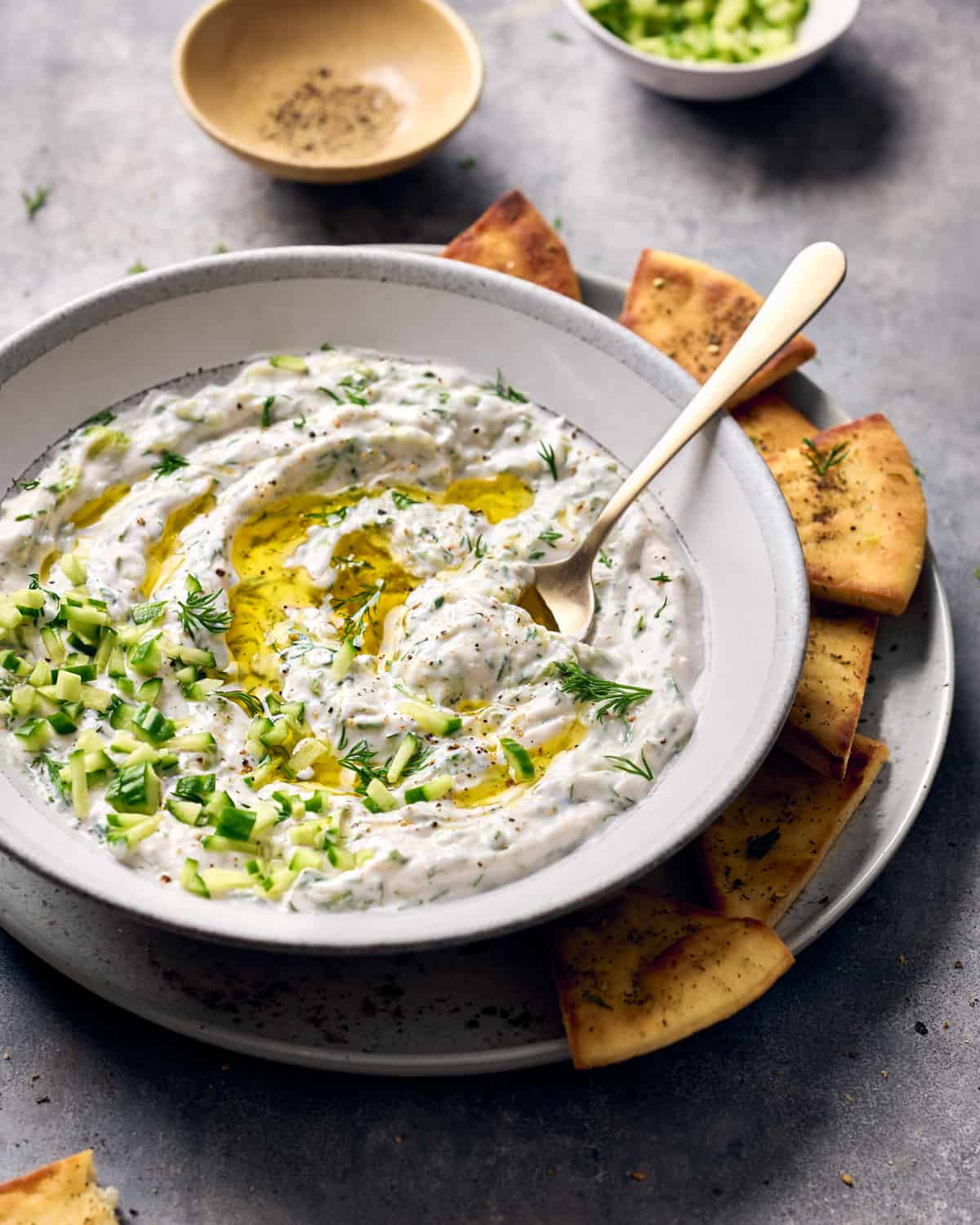
Why this recipe works
Delicious and garlicky yet cool.
Cucumber and curd give this sauce its light, refreshing and cooling qualities. The garlic, however, adds a strong and garlicky flavor that perks up the entire sauce.
All in all, it’s great with vegetarian Greek-style gyros, roasted vegetables, or anywhere else you could use the vibrancy of a creamy, garlicky, herby sauce.
Fast and easy.
Yogurt sauces are known for dynamic flavor layers, but that doesn’t mean they take long to prepare. All you need is 10 minutes to put together this dairy-free tzatziki!
The process is as simple as stirring the ingredients together in a bowl. But for the richest and creamiest results, exercise some patience and drain the water from your cuke (it takes 5 minutes or less). Nobody wants a watery tzatziki sauce!
Comes with constant use.
The long list of serving suggestions in the How to Serve section below is all you need to make this sauce a staple in your fridge and meal prep arsenal.
From pairing it with crudités, olives, and pita for a meze platter to drizzling it over a Greek salad, the uses for tzatziki are endless!
Material notes
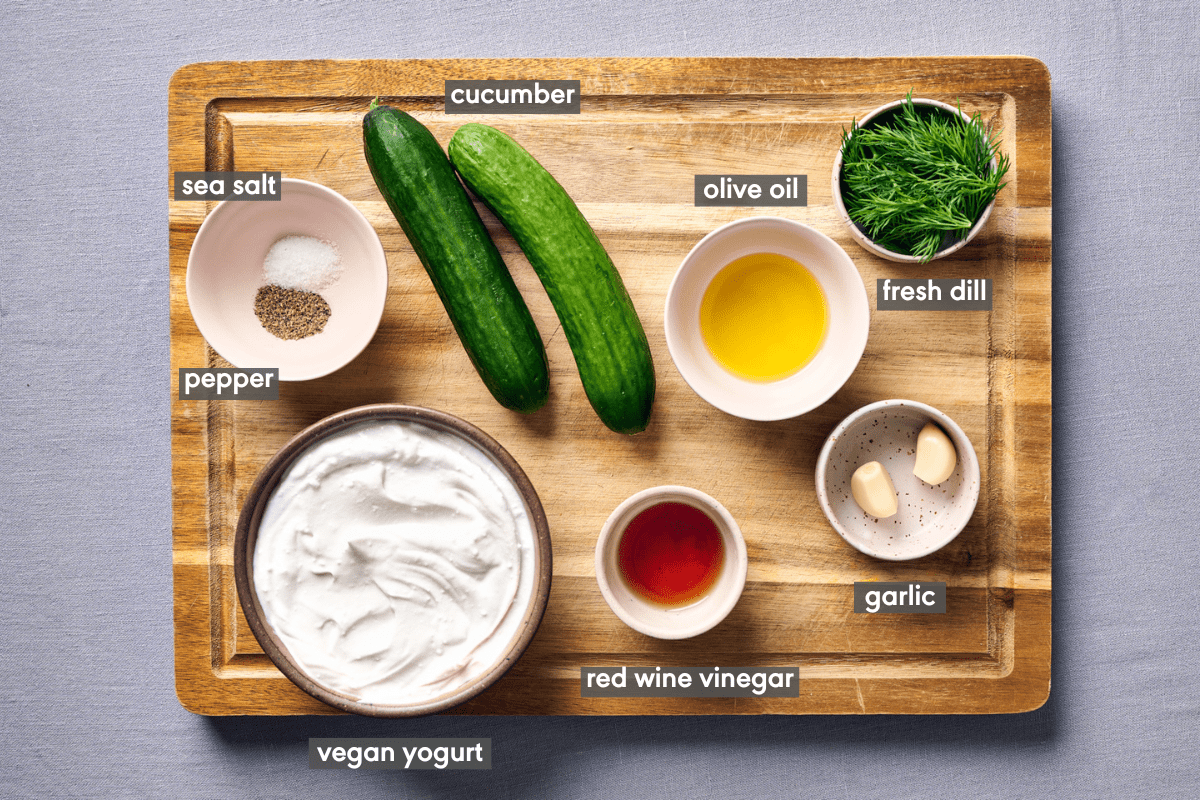
Vegan yogurt. Try to get your hands on the thickest, creamiest vegan yogurt you can find; Greek-style vegan yogurt or full-fat coconut milk-based yogurt is best. Standard thin vegan yogurts are too light and watery to use as a substitute for dairy-based Greek yogurt.
Check out my recommended dairy-free yogurt brands in the FAQ section below.
Cucumber. English or Persian cucumbers are best because they are tangy, crisp, sweet in taste and have mild flavored seeds. Any cucumber will be watery, though, so draining it is an important step in making tzatziki sauce.
garlic Fresh garlic is essential! It gives the sauce a strong warmth and sharpness and a lot of delicious flavor.
My Greek Dish says, “A great Tzatziki sauce is all about the garlic”. Here’s your guide to adding as much garlic as you need to achieve the best flavor!
fresh dill A classic tzatziki ingredient that brings a herby, bright and almost savory flavor.
alternative: Some recipes use fresh mint instead of dill. You can do this, or use both dill and mint.
Dried herbs don’t work very well. Their flavor is more concentrated, which makes the sauce easier to absorb.
Red wine vinegar. For a clean and bright acidity that makes tzatziki pop.
alternative: White wine vinegar or freshly squeezed lemon juice also works nicely. Whatever sour ingredient you use, make sure it’s the best quality because every flavor is on display.
Extra virgin olive oil. Must! The oil adds richness and a smooth mouthfeel. It complements the creamy consistency of the yogurt and brings the whole recipe together.
Step by step instructions
first, Grate the cucumber. I like to do this using the wide holes on a box grater.

Transfer the grated cucumber to a clean dish towel. Wrap it up and Drain as much water as possible You can over sink. Repeat a few times.
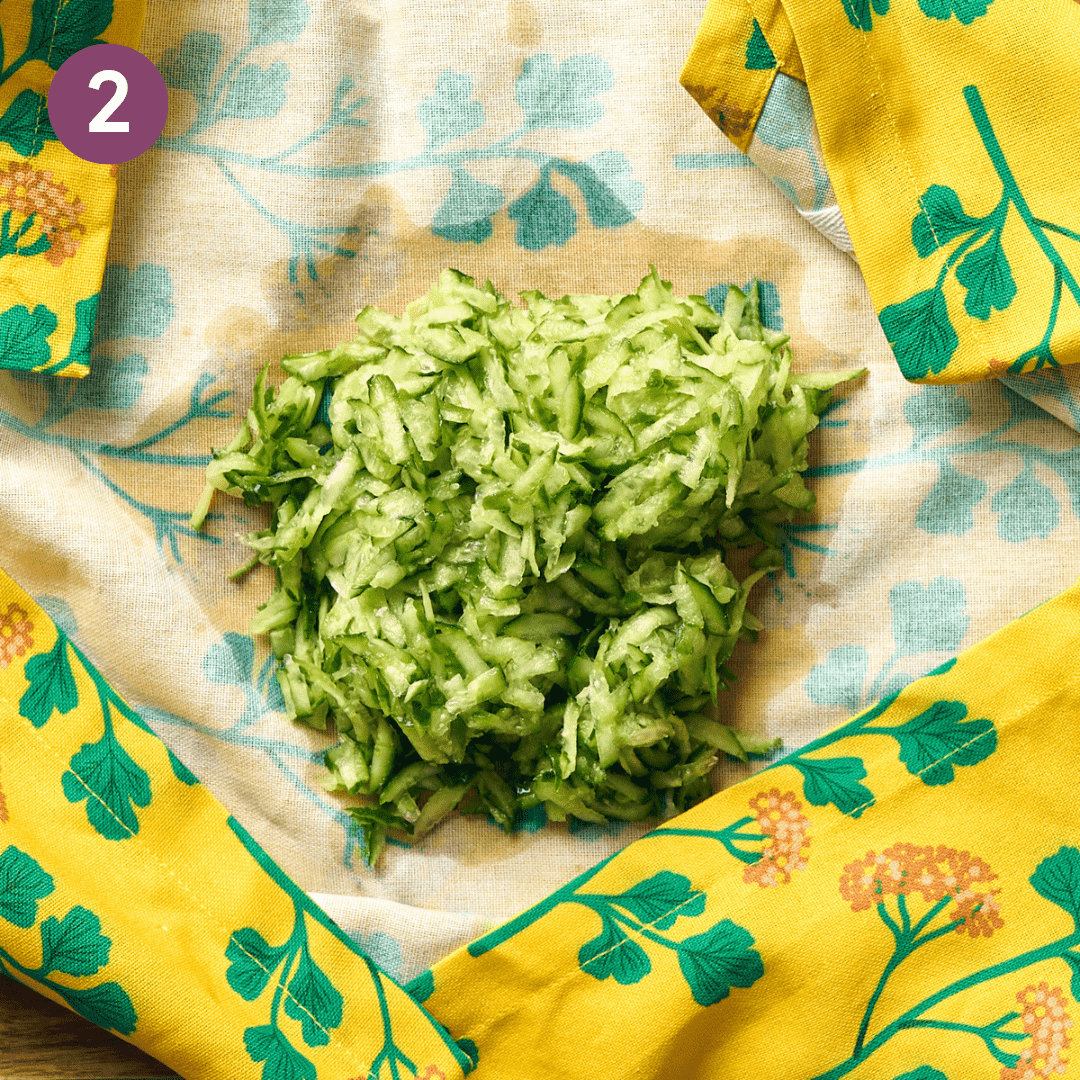
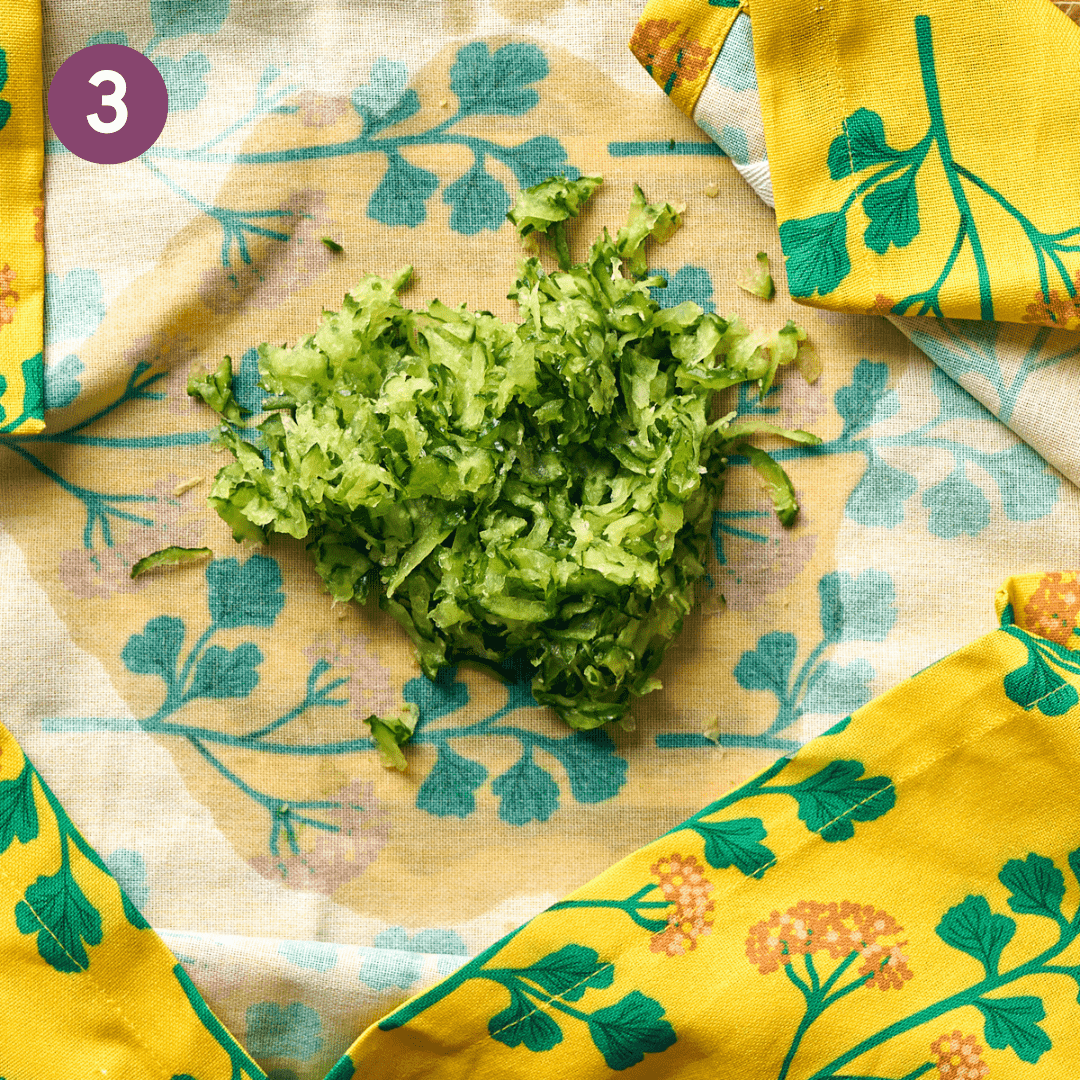
Next, add curd to a bowl. Add grated cucumber, dill, garlic, vinegar, salt, pepper and olive oil. Stir to combineThen give it a taste and add more spices or herbs as needed.
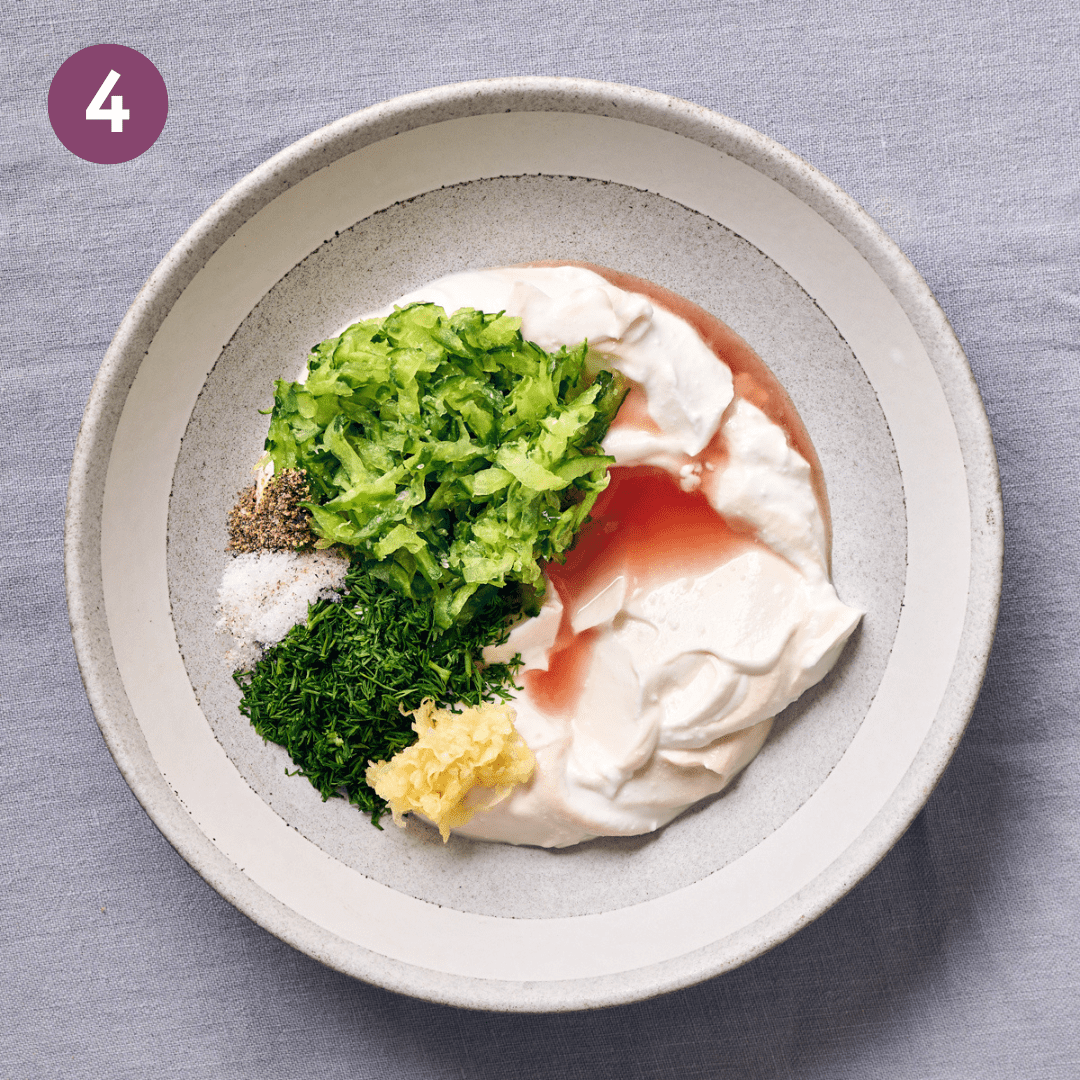
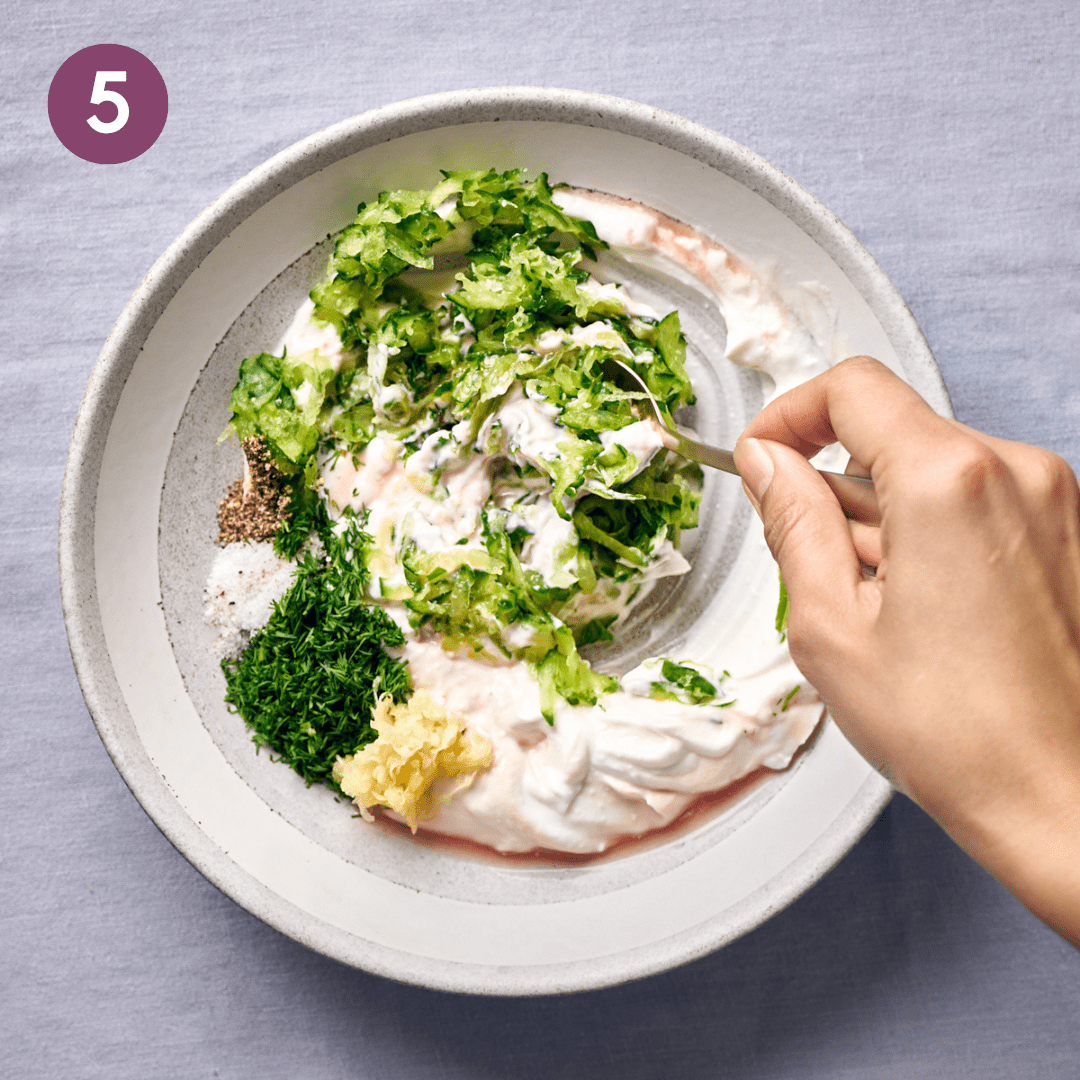
You can use the sauce right away or for best taste, Chill in the fridge For a minimum of 15 minutes (or a few hours).
Top with olive oil before serving, then enjoy!

Tips for making this recipe
Drain the cucumber water really well. Removing as much water as possible will prevent a watery tzatziki sauce and leave you with a creamy and thick consistency.
If you have extra time, place the grated cucumber in a colander and sprinkle salt on top. Rest for 20 to 30 minutes, then drain as usual. The salt will draw out more water and make the cucumbers delightfully crunchy.
For best-tasting tzatzikiYou need a thick, creamy vegan yogurt with a tangy/tart flavor and no sweet aftertaste.
Many vegan yogurts, even plain versions, taste a bit sweet: they won’t work well here. You can find my favorite vegan yogurt brands in the FAQ section.
Chop the garlic. Use a microplane, fine grater or garlic press to get the job done. Roughly chopped or minced garlic will leave you with small pieces, which are very strong and powerful here.
How to serve tzatziki
The creamy and refreshing qualities of tzatziki make it one of the best dipping sauces Maze Platter. Pair it with my beet hummus and surround these Mediterranean dips with pita, crudités, olives, vegan feta, and warm and crusty bread.
For something simple, just serve with Homemade Pita Chips (Find the recipe on the recipe card) and chop the vegetables.
Add dollops of tzatziki over zucchini fritters or falafel. Serve with tabbouleh on the side for a light and refreshing lunch.
Make a Greek plate: My favorite way to enjoy this flavor-packed plate is to pair it with a Greek salad, roasted chickpeas, toasted pita bread, and/or cooked grains (like farro).
Gyros wouldn’t be complete without tzatziki. For an incredible vegan gyros Check out the recipe, my cookbook, The Vegan Instant Pot Cookbook!
Dilute it with a little vinegar or lemon juice and olive oil Simple salad dressing.
If all else fails, think tzatziki An “everything sauce” The cool and refreshing bite is fantastic in a grain bowl, drizzled over roasted vegetables, spread on sandwiches and more.

Frequently Asked Questions
If you use English or Persian cucumbers, leave the skin on (it’s thin and delicate). If you can only find standard pole cucumbers, I would peel them, as the peel is thick.
Culina and Cocojun are two of my favorite coconut milk-based vegan yogurts. They are thick and creamy with a subtly tangy, tart flavor. They lack the sweet aftertaste of many vegan yogurt brands.
Kite Hill Foods also makes a Greek-style almond milk yogurt that works here. The flavor is quite unique, so I recommend adding more vinegar, lemon juice and/or salt to balance the flavor.
GT’s CocoYo and Anita’s Coconut Yogurt are two other great options, but they tend to be a bit pricey.
Finally, although I haven’t tried this recipe with Oatley’s unsweetened yogurt, I have tried it with other yogurt sauces with pretty good results.
Tzatziki is truly best the day it’s made, as the cucumbers release more water as they sit. But leftovers are still delicious and can be stored in an airtight container in the fridge for 4 or 5 days.
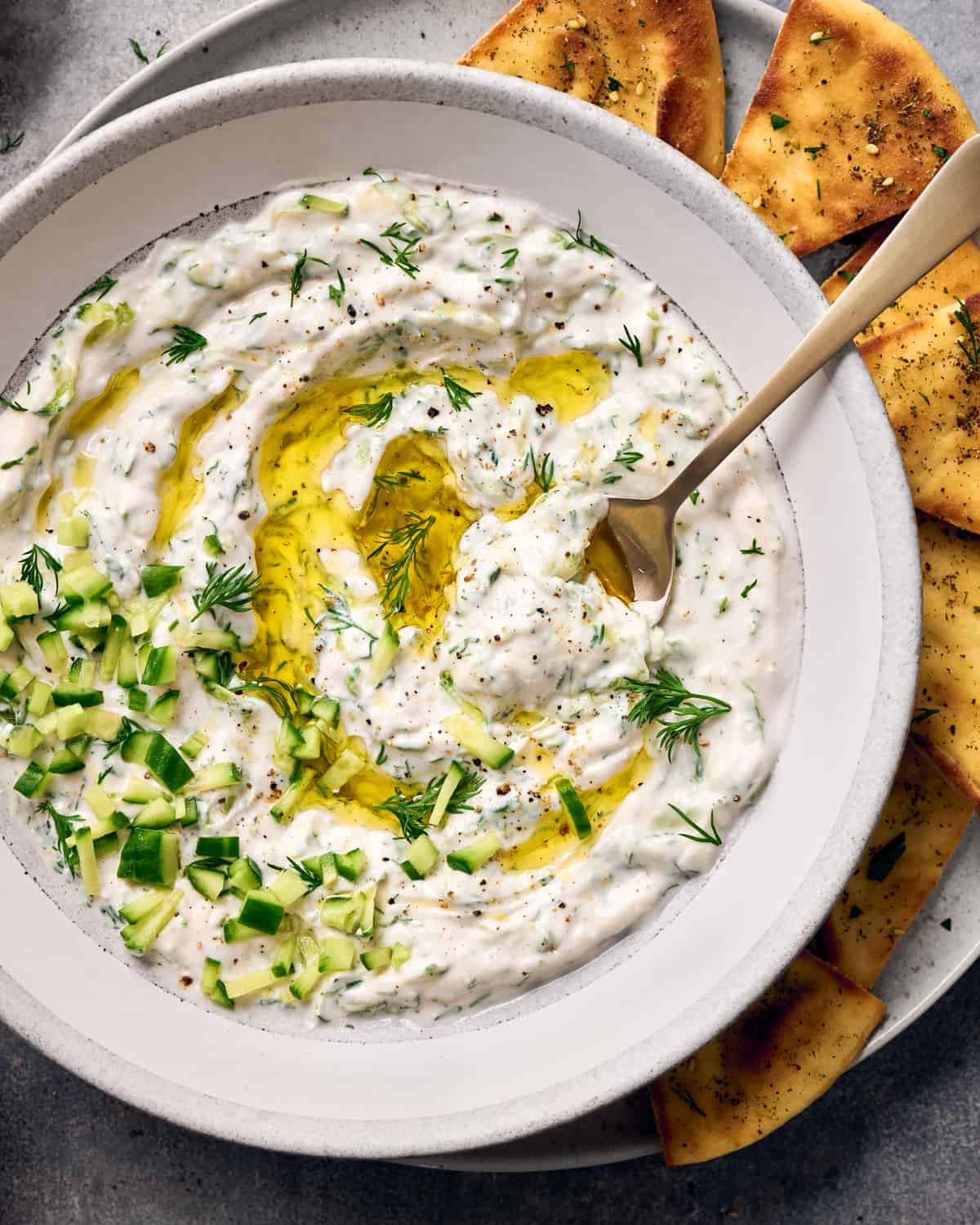
If you love this Vegan Tajik, make sure to leave a rating and review below! It’s always much appreciated 🙂 And tag me on Instagram – I love hearing your feedback.

This restaurant-worthy vegan zatziki is a yogurt, cucumber, and garlic sauce that’s quick and easy to prepare and has an irresistibly rich flavor. It goes well with everything from Greek salad and falafel to salads and sandwiches!
-
Use the wide opening on a box grater to grate the cucumbers.
-
Add grated cucumber to a thin dish towel, almond milk bag or cheesecloth. Squeeze or wrap tightly and squeeze out as much water as possible.
-
Add yogurt to a medium bowl. Add grated cucumber, dill, garlic, 2 teaspoons vinegar or lemon juice, salt, pepper to taste, and 1 tablespoon olive oil. Mix well. Taste for seasoning, adding more salt, vinegar or olive oil if needed.
-
If possible, let rest in the fridge for 15 to 30 minutes (or a few hours) to allow the flavors to marry.
-
If desired, drizzle with olive oil before serving.
Note 2: I prefer English cucumbers or Persian cucumbers, as they are sweet and seedless, but you can use regular cucumbers if needed (the skin is a bit tough, so you may want to peel it off).
Note 3: You can sub dill with fresh mint. Start with half the amount, add more if needed.
Note 4: If you don’t have good quality vinegar, you can sub with fresh lemon juice
Note 5: Homemade Pita “Chips”
Preheat oven to 400F. Arrange an oven rack on the second shelf of your oven, the second shelf of the broiler. Take a few rounds of pita and brush only the top with olive oil. Now cut each pita into 8 triangles. Transfer pita wedges to a sheet pan lined with parchment paper for easy cleanup. Bake for 6 minutes at 400F, then turn your oven broiler (use a medium setting if you have one). Broil on the second shelf for 1 ½ to 2 minutes, watching closely to prevent burning, until nicely browned on the edges. .
Recipe: Nisha Vora / Rainbow Plant Life | Photography: Megan Morello

